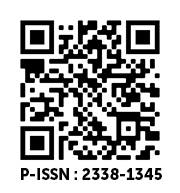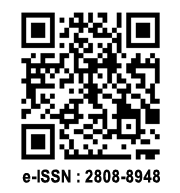Melitourism Potential of Bali, Indonesia and Bicol, Philippines
DOI:
https://doi.org/10.36782/apjsafe.v10i1.137Keywords:
Philippines, Indonesia, beekeeping, Tetragonula laeviceps, Tetragonula biroiAbstract
Melitourism, a special entomotourism featuring stingless bees as an agritourism attraction, remains less popular and underrated in Southeast Asian countries despite its economic benefits. This study assessed the melitourism potential of Bali, Indonesia, and Bicol, Philippines, through a qualitative approach using various indicators such as financial capital, market, social capital, environment, technology, policy, human capital, culture, and farm tourism as foundations for a melitourism social enterprise. Identification of these indicators was based on a literature review, and these became the basis of an interview guide designed for stingless bee operators. Findings showed that meliponiculture in Bali and Bicol offers a lot of promise as a social enterprise and tourism development. The stingless beekeeping industry dominated the aspects of environmental, technological, market, and social capital. Farmer groups provide a support system resulting in strong social capital. Compared to Bali, Bicol is quite advanced in agritourism integration in stingless bee farms. Melitourism is a good means of engaging the public to contribute towards a conducive entrepreneurial ecosystem for stingless beekeeping. Incorporating the tourism aspect in meliponiculture is a good economic diversification strategy that would enhance farm productivity and encourage farmers to engage in ethical practices that help maintain a healthy stingless bee population both on farms and in the wild. However, to hasten farmer engagement and melitourism development, local and national governments must strengthen their policy infrastructure and support this industry.
Keywords— melitourism, entomotourism, stingless beekeeping, apitourism, meliponiculture.
Downloads
References
66-75.
Bernhard & R.C. 1991. Zambia Beekeeping Handbook, Ndola. Mission Press, Zambia.
Boileau, E., & Russell, C. 2018. Insect and human flourishing in early childhood education: Learning and crawling together. In A. Cutter-Mackenzie- Knowles, K.
Malone, & E. Barratt Hacking (Eds.), Research handbook on childhood nature, pp. 1-16. Cham, Switzerland: Springer.
Dantas, M. 2016. Thermogenesis in Stingless Bees: An Approach with Emphasis on Broods' Thermal Contribution. Journal of Animal Behavior and
Biometeorology 4 (4): 101-108.
Gerosa Bellows, M. 2011. The buzz in Mexico. National Geographic.
Gill, R.. 1996. The benefits to the beekeeping industry and society from secure access to public lands and their melliferous resources. A report
to the Honeybee Research and Development Council of Australia. pp. 1-44.
Hamzah, A. & Ismail, H.A. 2008. Perancangan Koridor Pelancongan Berasaskan Budayadan Alam Semulajadi, Projek Lapangan di Kelantan
Darul Naim [A Design of Nature-culture Based Tourism Corridor; A Pilot Project at Kelantan Darul Naim], Universiti Teknologi Malaysia, Johor Bahru. pp. 8–9.
Hilmi, M., Bradbear, N., Mejia, D. 2019. Beekeeping and Sustainable Livelihoods. 2nd Edition. Food and Agriculture Association. pp.1-84.
Isah, I.A., Olagunju, O., Ismail, M.M., Hassan, S & Man, N. 2019. Enhancing sustainable stingless beekeeping production through technology
transfer and human resource development in relationship with extension agents' work performance among Malaysian beekeepers. Asian Journal of
Agricultural Extension, Economics & Sociology, DOI: 10.9734./AJAEES/2019/v30i230108
Isenberg, D. 2011. The entrepreneurship ecosystem strategy as a new paradigm for economic policy: principles for cultivating entrepreneurship. Babson
entrepreneurship ecosystem project, Babson College, Babson Park: MA.
Legrand, W., Sloan, P., & Chen, J. 2013. Sustainability in the hospitality industry: Principles of sustainable operations. New York, NY: Elsevier.
Lemelin, R. H. 2013a. To bee or not to bee: Whether ‘tis nobler to revere or to revile those six-legged creatures during one’s leisure. Leisure Studies
32(2): 153-171.
Lemelin, R. H. 2013b. The management of insects in recreation and tourism. Cambridge, UK: Cambridge University Press.
Lemelin, R. H. 2015. From the recreational fringe to mainstream leisure: The evolution and diversification of entomotourism. In K. Markwell (Ed.), Birds, beasts,
and tourists: Human-animal relations in tourism, pp. 232-240. Toronto, ON: Channel View.
Lemelin, R. H. 2019. Entomotourism and the stingless bees of Mexico. Journal of Ecotourism. doi:10.1080/14724049.2019.1615074
Lemelin, R. H., Harper, R., Dampier, J., Bowles, R., & Balika, D. 2016. Humans, insects and their interaction: A multi-faceted analysis. Animal
Studies Journal 5(1): 65-79.
Lockwood, J. 2013. The infested mind: Why humans fear, loathe, and love insects. New York, NY: Oxford University Press.
McNeely, J.A., Thorsell, J.W., and Ceballos-Lacsurain, H. 1992. Guidelines: The Development of National Parks and Protected Areas for Tourism. World
Tourism Organization, Minnesota, United States. pp. 29–39.
Mohamad, S., Mohamed, M., and Hamdin, M.S. 2018. Potential of vascular plants as photo tourism products in Endau Rompin Johor National Park, Malaysia. AIP
Conference Proceedings 2002, 020054. https://doi.org/10.1063/1.5050150
Moorhouse, T., Dahlsjö, C., Baker, S., D'Cruze, N., & Macdonald, D. 2015. The customer isn't always right: Conservation and animal welfare
implications of the increasing demand for wildlife tourism. PloS One, 10(10): 1-15.
Newsome, D., Moore, S.A., & Dowling, R.K. 2002. Natural Area Tourism: Ecology, impacts, and management. Channel View Publications, Clevedon. pp 35–42.
PNS/BAFS 186. 2016. Philippine National Standard for Code of Goof Beekeeping Practices. Bureau of Agriculture and Fisheries Standards.
Robison, L. J., Schmid, A. A., & Siles, M. E. 2002. Is social capital really capital?. Review of social economy, 60(1): 1-21.
Schlegel, J., Breuer, G., & Rupf, R. 2015. Local insects as flagship species to promote nature conservation? A survey among primary school children
on their attitudes toward invertebrates. Anthrozoös, 28(2): 229-245.
Thomas, C. & Jim, K. 2013. Livelihood improvement and smallholder beekeeping in Kenya: the unrealized potential, Development in Practice, 23 (3): 332- 345.
DOI: 10.1080/09614524.2013.781123
UNWTO (United Nations World Tourism Organisation). 2013. Tourism Highlights, 2013 Edition (UNWTO, Madrid). pp. 6–9.
Van der Valk, H. & Koomen, I. 2013. Aspects determining the risk of pesticides to wild bees: risk profiles for focal crops on three continents, Food and Agriculture
Organization of the United Nations.
Veltman, K. 2013. Butterfly conservatories, butterfly ranches, and insectariums: Generating income while promoting social and environmental
justice. In R. H. Lemelin (Ed.). The management of insects in recreation and tourism, pp. 189-197. Cambridge, UK: Cambridge University Press.
Vergano, D. (5). Reasons the Philippines Is So Disaster Prone. National Geographic. Retrieved from
https://news. nationalgeographic. com/news/2013/11/131111-philippinesdangers-haiyan-yolanda-death-tollris es.
Vit, P., Pedro, S.R.M., & Roubik, D. (Eds). Pot-Honey: A legacy of stingless bees. New York, NY: Springer.
Wen Yu and Daniel M. Spencer (2020): Motivations, challenges, and self-transformations of farmers engaged in farm tourism on a tropical island.
Journal of Heritage Tourism.DOI: 1080/1743873X.2020.1776296
Wos B. 2014. Apitourism in Europe. Journal of Environmental and Tourism Analyses, 2(1): 66-74.
Zulkhairi Amin, F. A., Sabri, S., Mohammad, S. M., Ismail, M., Chan, K. W., Ismail, N., & Zawawi, N. 2018. Therapeutic properties of stingless bee
honey in comparison with European bee honey. Advances in Pharmacological and Pharmaceutical Sciences.









